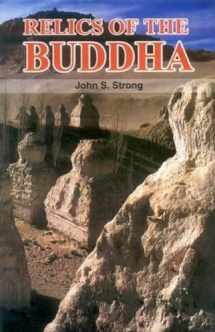
Relics of the Buddha
ISBN-13:
9788120831391
ISBN-10:
812083139X
Edition:
2007
Author:
John S. Strong
Publication date:
2007
Publisher:
Motilal Banarsidass
Format:
Hardcover
312 pages
FREE US shipping
Book details
ISBN-13:
9788120831391
ISBN-10:
812083139X
Edition:
2007
Author:
John S. Strong
Publication date:
2007
Publisher:
Motilal Banarsidass
Format:
Hardcover
312 pages
Summary
Relics of the Buddha (ISBN-13: 9788120831391 and ISBN-10: 812083139X), written by authors
John S. Strong, was published by Motilal Banarsidass in 2007.
With an overall rating of 3.5 stars, it's a notable title among other
books. You can easily purchase or rent Relics of the Buddha (Hardcover) from BooksRun,
along with many other new and used
books
and textbooks.
And, if you're looking to sell your copy, our current buyback offer is $0.37.
Description
Buddhism is popularly seen as a religion stressing the truth of impermanence. How, then, to account for the long-standing veneration, in Asian Buddhist communities, of bone fragments, hair, teeth and other bodily bits said to come from the historic Buddha? Early European and American scholars of religion, influenced by a characteristic Protestant bias against relic worship, declared such practices to be superstitious and fraudulent, and far from the true essence of Buddhism. John Strong`s Book, by contrast, argues that relic veneration has played a serious and integral role in Buddhist traditions in south and Southeast Asia and that it is in no way foreign to Buddhism. The book is structured around the life story of the Buddha, starting with traditions about relics of previous buddhas and relics from the past lives of the Buddha Sakyamuni. It then considers the death of the Buddha, the collection of his bodily relics after his cremation, and stories of their spread to different parts of Asia. The Book ends with a consideration of the legend of the future parinirvana (extinction) of the relics prior to the advent of the next Buddha, Maitreya. Throughout, the author does not hesitate to explore the many versions of these legends and to relate them to their ritual, doctrinal, artistic, and social contexts. In 1561, during a military operation in Sri Lanka, Portuguese troops had captured what "local idolaters" (i.e., Buddhists) claimed was the tooth of the Buddha, and had delivered it as a prize to their viceroy, Don Constantino da Braganca. The viceroy had hoped to hold it for ransom, but now the archbishop of Goa, Don Gaspar, was insisting that it be destroyed. On a porch overlooking the river, in the presence of a great crowd of Christians and ''pagans,'' he called for the tooth and ''placed it in a mortar, and with his own hand reduced it to powder, and cast the pieces into a brazier which stood ready for the purpose; after which the ashes and the charcoal together were cast into the river, in sight of all those who were crowding the verandahs and windows which looked upon the water'' (Tennent 1859, 2:215. See also chapter 7 in this book). As benighted as such an action may seem to us today, it can at least be said that the Portuguese archbishop appreciated the nature of relics. Conscious of the power of holy objects from his own tradition, he felt that the tooth had to be utterly and permanently eradicated. In his mind, this was not just a piece of bone that he was destroying but a ''relic of the devil'' (reliquia do demonio) something alive that had to be killed (Tennent 1859, 2:214; text in De Couto 1783, 17:429) Rather different were the attitudes of some of Don Gaspar's Protestant contemporaries in Europe. John Calvin, to my knowledge, never said anything about Buddhist relics, but in 1543 he wrote a whole treatise on Roman Catholic ones (Calvin 1970). And although he too, given the chance, would probably have crushed the Buddha`s tooth to bits, he would have done so for different reasons. For him, relics embodied no sacred or even demonic presence, and it was wrong and exploitative to pretend that they did. Relics were nothing but material things, as he pointed out when he got rid of what had been two of Geneva`s prized relics-the arm of Saint Anthony and the brain of Saint peter; the one, he proclaimed, was but the bone of a stag, and the other a piece of pumice (Calvin 1970:53)


We would LOVE it if you could help us and other readers by reviewing the book
Book review

Congratulations! We have received your book review.
{user}
{createdAt}
by {truncated_author}


